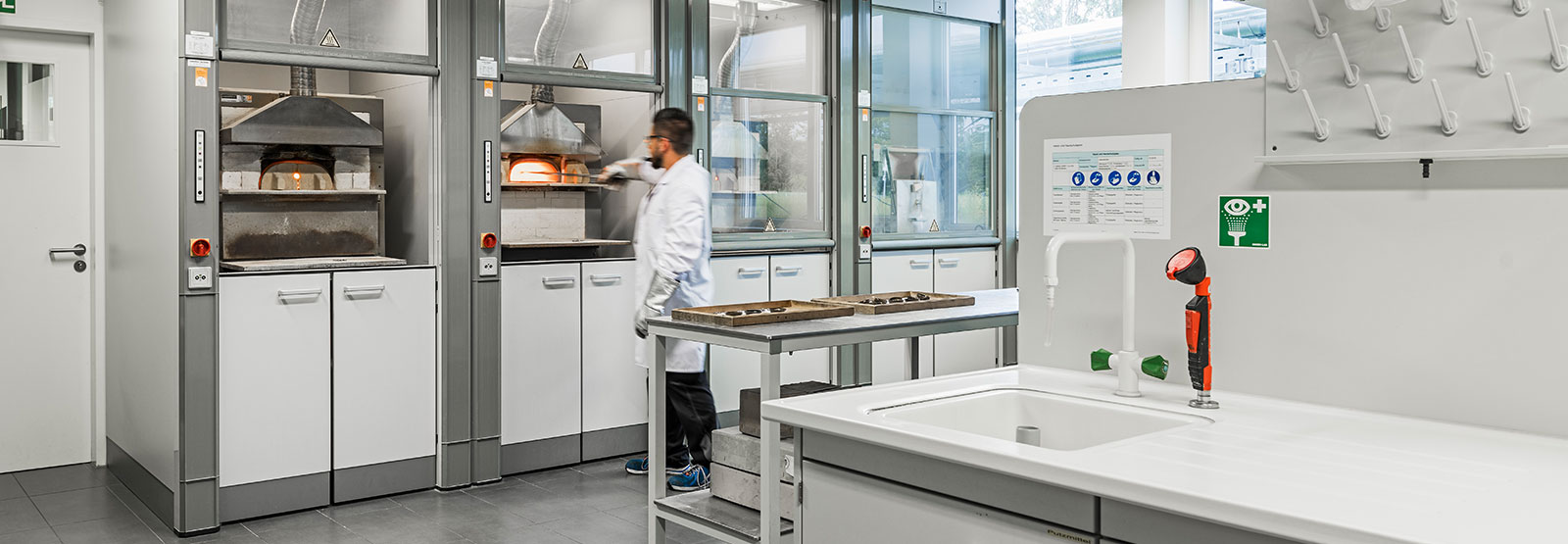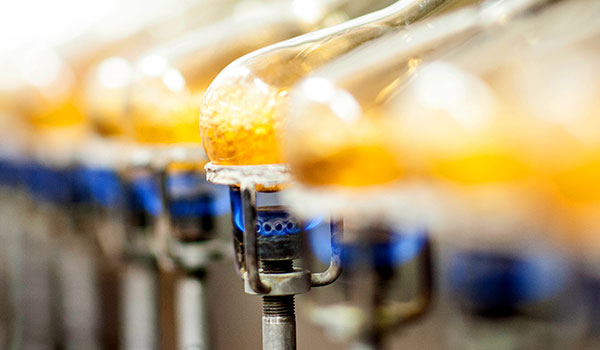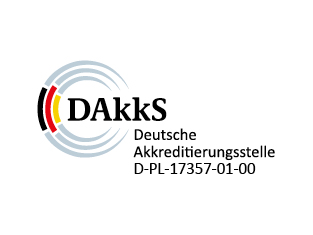Technologies
Analytics
C.HAFNER analytics stand for the highest professional expertise and solution - focussed individual advice and support. The Laboratory Management Information System (LIMS) optimises and protects processes. Our certifications according to DIN EN ISO 9001 and DIN EN ISO 13485 for medical devices as well as laboratory accreditation according to ISO 17025 guarantee the highest reliability.
In order to maintain these certifications, C.HAFNER is audited regularly by external certification bodies, and in addition, the laboratories of C.HAFNER regularly participate in international interlaboratory tests.

The C.HAFNER laboratories
The laboratories division includes chemical analysis, the testing laboratory and the physical laboratory. The analysis technique used in the testing laboratory, docimacy, is the oldest known method for determining the fineness of gold alloys. The term “docimacy” (assaying) goes back to trial melting or simple testing.
Services
- State-of-the-art analytics with different spectroscopic types and methods:
- Atomic emission spectrometry (ICP-OES)
- Atomic absorption spectrometry (AAS)
- X-ray fluorescence analysis (RFA)
- Powerful metallography and standard methods for determining physical material properties (tensile test, Vickers hardness measurement, thermal analysis, dilatometry)
- Scanning electron microscopy and EDX analysis for professional materials development and failure analysis.
- Dynamic image analysis (DIA) to characterise particle size and particle shape of precious metal powders
Analyses
- Determining the fineness of jewellery alloys
- Determining the composition of jewellery and dental alloys
- Determining impurities in fine metals
- Metallographic and material studies
- Determining the composition of waste and dross containing precious metals
Accreditation
The laboratory division at C. HAFNER is accredited as a testing laboratory by the DAkkS in accordance with DIN EN ISO/IEC 17025. Accreditation confirms that C. HAFNER performs its activities competently according to internationally recognised standards and in compliance with legal requirements. This creates confidence in the important work of the laboratories as independent conformity assessment bodies and their services.
The accreditation is only valid for the scope of accreditation listed in the annex to the certificate (Certificate of Accreditation). Determination of fine metals (gold, silver, platinum and palladium) in precious metal alloys (List of Accredited Methods.
- ISO 11426 Jewellery – Determination of gold in gold jewellery alloys – Cupellation method (fire assay)
- ISO 11427 Jewellery – Determination of silver in silver jewellery alloys – Volumetric (potentiometric) method using potassium bromide
- ISO 11494 Jewellery – Determination of platinum in platinum jewellery alloys – ICP-OES method using yttrium as internal standard element
- ISO 11495 Jewellery – Determination of palladium in palladium jewellery alloys – ICP-OES method using yttrium as internal standard element
- ASTM B562-95: Standard Specification for Refined Gold
- ASTM B413-97: Standard Specification for Refined Silver
- ASTM B561-94: Standard Specification for Refined Platinum
- ASTM B589-94: Standard Specification for Refined Palladium
- DIN EN 1811: Reference test method for release of nickel from all rod assemblies which are inserted into pierced parts of the human body and articles intended to come into direct and prolonged contact with the skin;
- DIN EN ISO 10271 Dentistry – Corrosion test methods for metallic materials
- DIN EN ISO 22674 Dentistry – Metallic materials for fixed and removable restorations and appliances
- DIN 51007 Thermal analysis – Differential thermal analysis (DTA)
- DIN 51045 Determination of linear thermal expansion of solids (coefficient of thermal expansion)
- DIN 6507 Metallic materials – Vickers hardness test
- DIN EN ISO 6892 Metallic materials – Tensile testing


